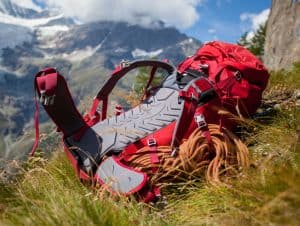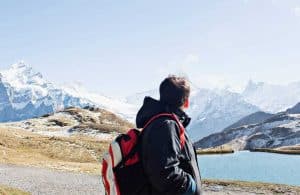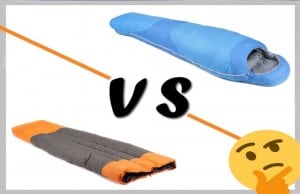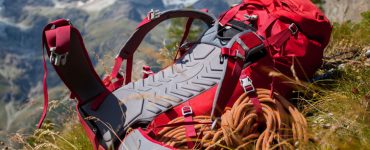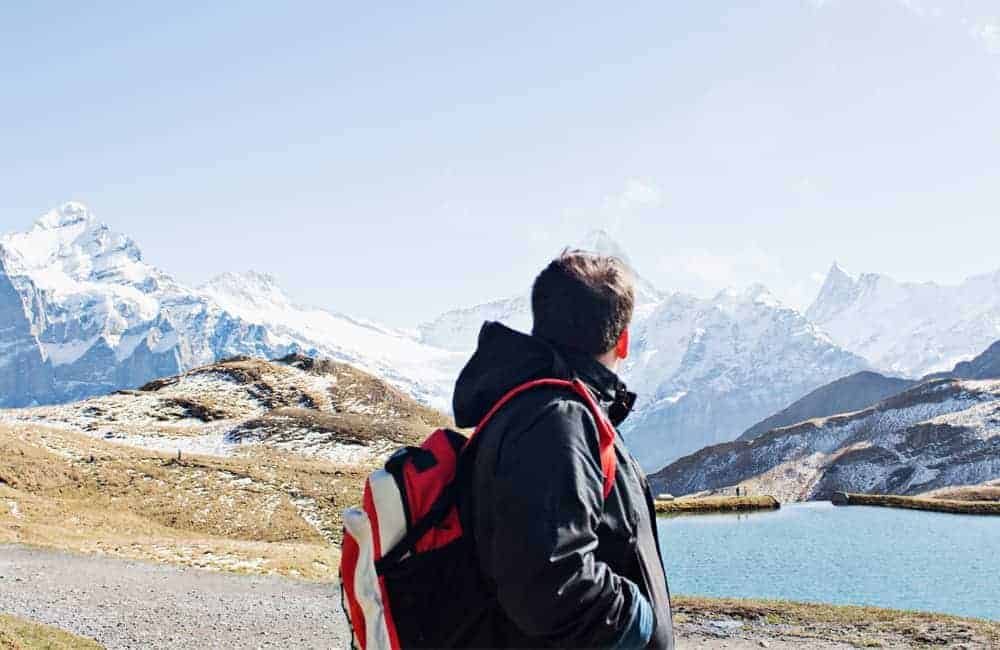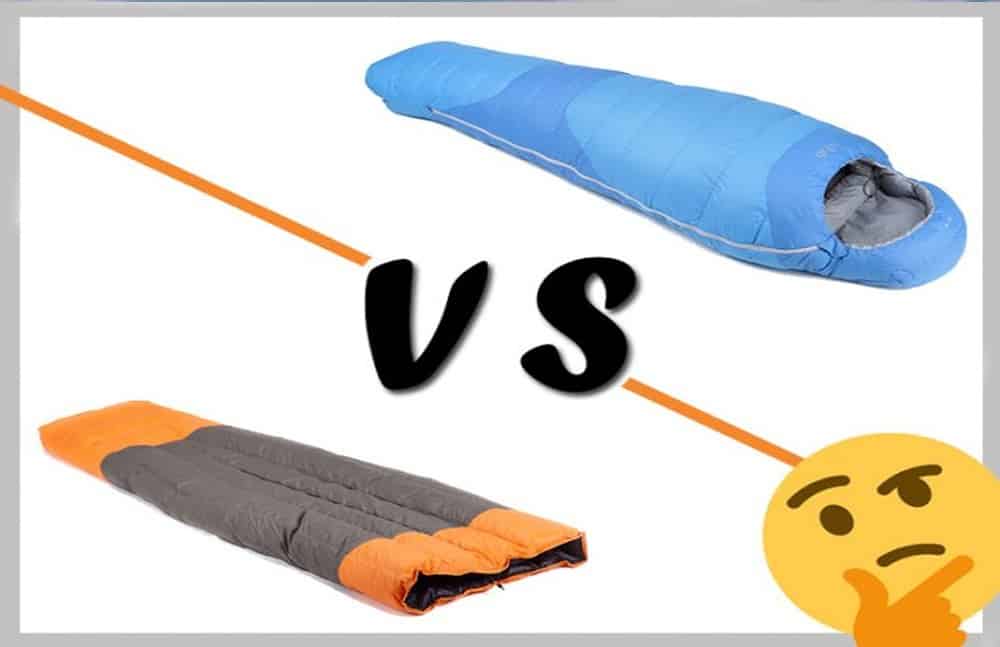When it comes to backpacking, there are a variety of choices available to hikers. From carrying everything on your back to packing as light as possible, there is an option for everyone. For those who are looking for an ultralight backpacking option, is it really worth it?
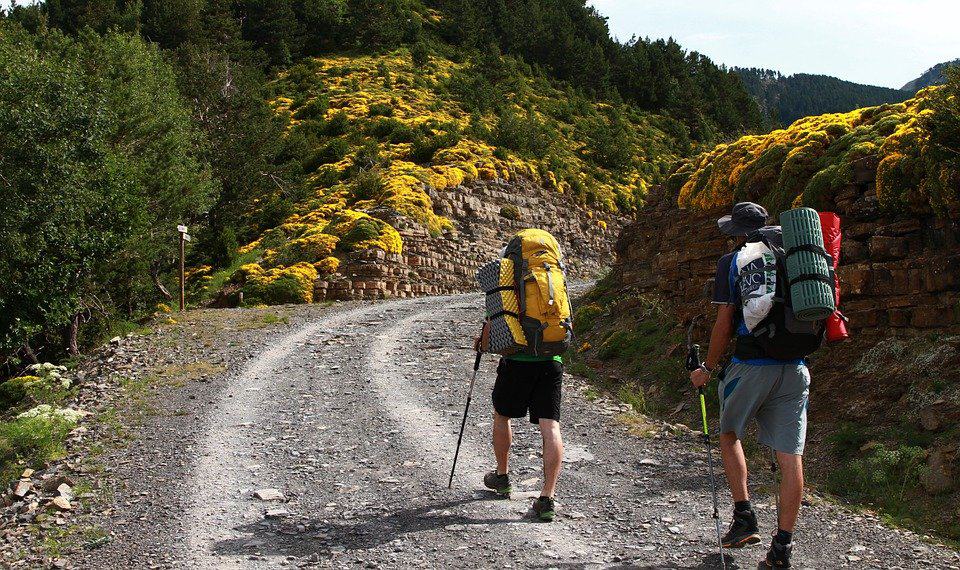
Ultralight backpacking has been gaining in popularity for a few reasons. For one, it’s more affordable than traditional backpacking. But perhaps the most compelling reason to try ultralight backpacking is that it offers a unique experience.
Ultralight gear is typically easier to carry and can provide an incredible amount of solitude. Backpackers who enjoy exploring new territory and seeing the world from a different perspective are sure to love ultralight backpacking!
What is Ultralight Backpacking?
It is said that ultralight backpacking was made popular by Ray Jardine, a rock climber who authored a book entitled PCT Hiker’s Handbook in 1992 which was later re-titled in 1999 as Beyond backpacking. His books were the ones that laid the fundamentals for most of the techniques that ultralight backpackers are using up to this day and age.
Grandma Gatewood was among the first known pioneers of this form of backpacking who hiked in 1955 in through the Appalachian Trail carrying only a duffel bag which contained a plastic sheet, blanket, umbrella, as well as other really simple gear.
With the growing popularity of big trails came the increasing fame of ultralight backpacking. Then, during the later part of 1990s and the early 2000s, other companies sprung up offering mainly ultralight gear.
The philosophy of ultralight backpacking is basically swapping the single purpose for multipurpose and eliminating unnecessary gear. The gear is then supplemented with skill, experience, and knowledge. Ultralight backpackers carry lighter specialized gear and they repackage and carry the only things you need.
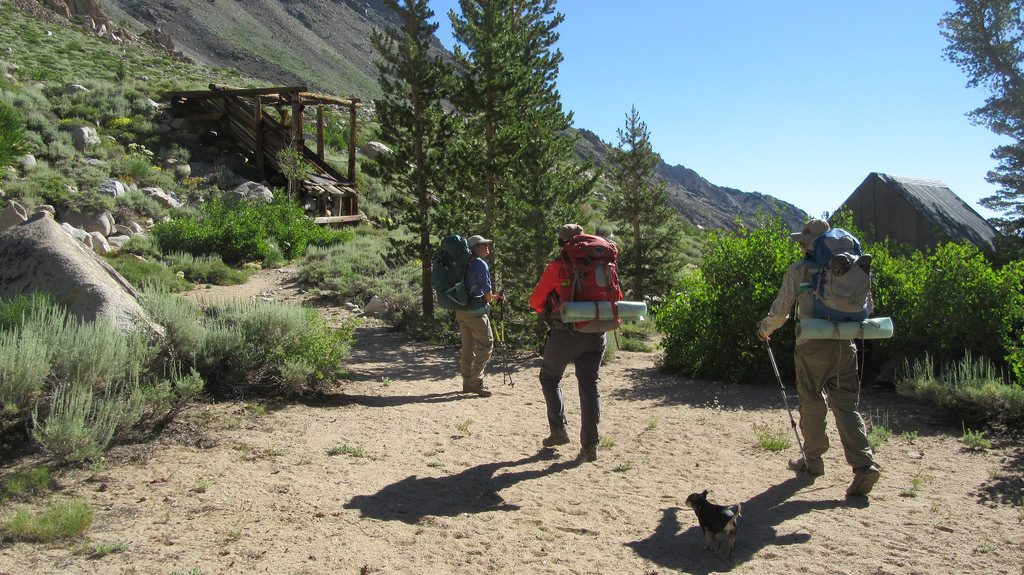
Main Objective of Ultralight Backpacking
Reduce the weight of items
Ultralight backpacking trims the superfluous weight from pieces of gear such as additional tags, straps, repair kits, and others.
Carry less
You have to understand the consumable needs and the appropriate gear for conditions you are going to experience. For instance, there is no need for a full-fledged first aid kit. You have to learn to use only what you got. When you suffered from a bad laceration, you have to know the right way of bandaging yourself using sports tape or duct tape as an alternative to bandages and gauze which you might not really need.
Trade gear for skill and knowledge
Some backpackers never need a compass in all their years of backpacking. What you should do instead is to have a good understanding of the terrain. You also have to know the right way of navigation with the use of the sun or stars or how to read topographic maps. You also have to learn how to care for common injuries with the use of your available gear. Avoid bringing items that only serve one common purpose like first aid kits.
Fun Outdoor Quiz
Repackage gear
It is likely that you will not be needing a large sunscreen bottle or another bag for carrying tent stakes. Think of how you can store these with the rest of your gear.
Be light with your feet
Just one pound on your feet might feel like 10 pounds after a day of walking 20 plus miles. When you lessen your weight in general, you will never require an ankle support.
Reuse
You could easily get by with one set of hiking clothes and one set of sleeping clothes. Wear clothes that have anti-microbial properties like Merino Wool that can resist bacteria which cause unwanted odors. Wear sleeping clothes at night so that body oils will be kept off from your sleeping bag then wear them occasionally for washing hiking clothes in rivers or lakes. Just bring two pairs of socks then rotate these every day where you wash the unused pair and hang them on the pack to dry them while hiking. The same thing goes for your underwear.
Why Go Ultralight Backpacking?
 Ultralight backpacking is considered as a safer, healthier, and more liberating experience. You will be able to see more, do more and enjoy more experiences with lesser things to burden you down. This is a style you will be able to transition into numerous areas of your life. You will feel a freedom that will grow on you when you spend most of your time living with less. Below are some of the best reasons to ditch the weight sooner.
Ultralight backpacking is considered as a safer, healthier, and more liberating experience. You will be able to see more, do more and enjoy more experiences with lesser things to burden you down. This is a style you will be able to transition into numerous areas of your life. You will feel a freedom that will grow on you when you spend most of your time living with less. Below are some of the best reasons to ditch the weight sooner.
It is healthier
Lesser weight on your hips or shoulders can reduce cases of injury. It will be less likely for you to fall, impact your wrists, roll your ankles, or injure your joints, particularly your knee. You will feel less fatigue with lesser risks of making bad decisions.
It is more enjoyable
It might be subjective yet people who have lighter packs usually enjoy their experience even more. As mentioned earlier, you will be able to see more. Trails and passes will be less daunting, you will get less blisters, suffer from less discomfort, and it will be less frustrating to walk over large expanses of snow because of lesser post-holing.
Go further
You will need less food, less water, and it will be slower before you feel fatigue compared to when carrying 40 pounds on your back.
It compounds
Reduced weight means more reductions in weight. When the weight of your pack drops, there is no need to wear chunky boots to support your ankles. You will also carry less water and food. When you become more experienced, it will be easier for you to determine your limits and keep yourself from overloading consumables. Sooner, you will be able to carry a much lighter backpack made especially for lighter and more compact loads.
It can open new doors
Have you been dreaming of tackling that peak of 14,000 feet but 3 nights are needed to do so? You can forget about this recommended when you push yourself for an average of 20 miles or more. If you want to head off on the side trail and visit that lake that not everyone knows about, the time to do it is now through ultralight backpacking.
You start to appreciate having less
This is something that is worthy to emphasize. When you go ultralight backpacking, you get to learn to live with less. Exploring a different country for several months with nothing but just your small backpack can alter the way you see materialism.
You get to support small businesses
You will be able to support small businesses when you buy their handmade ultralight gear instead of spending your money on large corporations.
Essential Gear List for Ultralight Backpacking
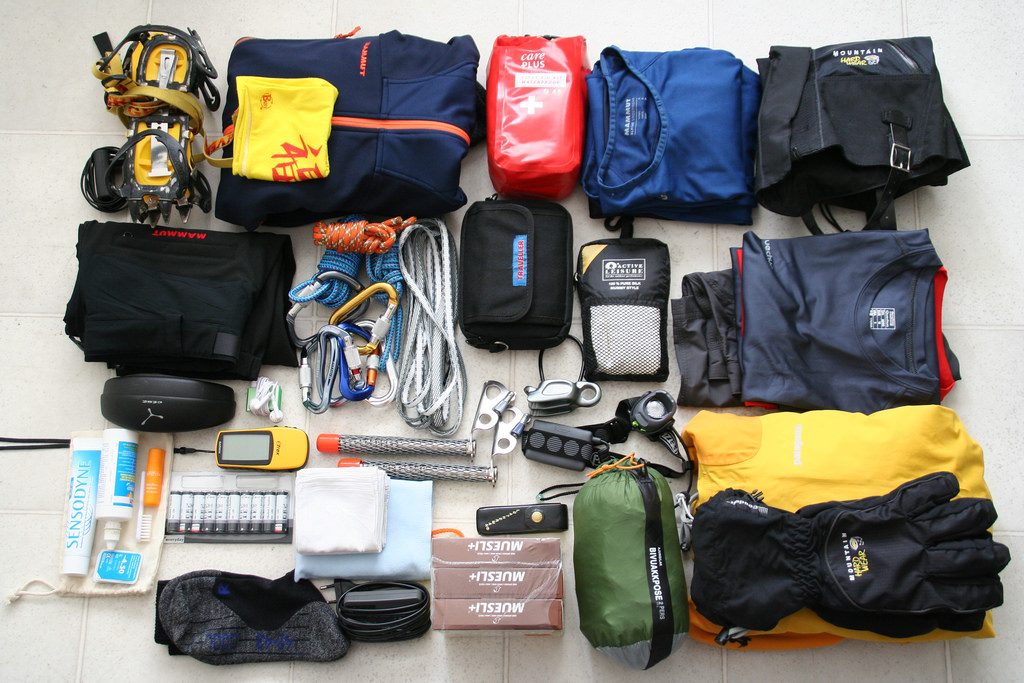
Over packing is often the result of packing because of your fears instead of the experience you wish to have. It is definitely impossible to enjoy and bask in the wonders of the experience when you don’t have any energy left, you feel dead tired, and you cannot cover the entire trail as you originally planned.
Among the key culprits behind such disappointments is the need to carry an excessively heavy backpack. When you pack more, it only means that you will be wearing heavier gar as well such as a bigger frame in the pack and heavier hiking boots just so you can support the extra weight.
But, a slim checklist for backpacking will mean lighter. When there is lesser weight and lighter gear, you will have more stamina, energy, and keener focus as to what you are backpacking in the first place.
In general, ultralight packs are 10 pounds and less compared to the 20 pounds of lightweight packs. These weights don’t include food, water, and fuel.
When you go ultralight backpacking, there are several essentials that you can never do without:
Essentials
- A black trash bag or dry bag – Keep your items protected from river crossings and rain through lining your pack using a dry bag or trash bag.
- Non freestanding single wall tent – When nighttime comes, the trekking poles can be used for keeping your tent up. Make sure you bring your stakes and guylines. Hammocks, bivys, and tarps are also great alternatives although they offer lesser protection from weather elements.
- Small and lightweight backpack with small frame – Prior to choosing the pack you will use, make sure that you measure your hip belt size and torso length. It will ensure that you are going to get the suitable size for your body. Don’t forget to adjust this properly to fit your body.
- Sleeping bag – Opt for a slim fit and warm weather sleeping bag which can fit you in comfortably. It can warm up much faster and lighter at the same time because it doesn’t have the unnecessary fluff. Take note that you can also choose to add on another warm layer for more warmth.
- Pillow – For your pillow, your pack can do the job. Meanwhile, if you like to bring an inflatable pillow, don’t forget to bring your repair kit that you can use if holes happen.
- Foam pads – Pick a short pad for cushioning your back and hips from rocks and roots of trees. If you require padding for your feet, you may utilize clothes. Moreover, foam pads can double as seats. Go for the short ones that would protect your back and hips.
- Chlorine dioxide, gravity filters, and hand pumps – The hand pumps are good for instant drinking water. The gravity filters don’t need physical work. Chlorine dioxide, the lightest option, preferred over iodine and bleach since it’s effective over 2 of the biggest bugs found in the water while the latter protect against one.
- Water bottle – Water is one of the heaviest things you can bring along with you. However, without this, your trip would end quickly. So, be wise and bring enough water with you.
Aside from those essentials, there are other things important to take note for your ultralight backpacking and these are:
Clothing
Never bring 2 items that serve one purpose. But, socks are an exception. For backpacking gear list, select the synthetic fibers that dry fast over cotton.
- Rain pants
- Thin, waterproof rain jacket
- Wool fleece hat
- Down layer coat – Such could weigh as little as six ounces and these could double that would keep you warm in you warm in the sleeping bag.
- Hiking shirt
- Mittens
- Zip off the hiking pants
- Pair of skirts, leggings, running shorts.
- Running shoes – Pick a pair of lightweight and durable running shoes.
- Synthetic socks – Bring 3 pairs of socks with better padding on the soles.
- Long Sleeve Shirts – It’ll double for sun protection as well as against bugs and mosquitoes.
- Check some simple layer systems for backpacking in any kind of weather.
- Hat – You might like to pick one that has wide brim for good sun protection.
- Long John top and pants
- Synthetic underwear
- Gaiters are ideal to keep rocks and some debris from getting in your own running shoes.
Cooking
Avoid the canned foods and the ones that have low nutritional value. Never be afraid to pack extra meals. Repack the bagged items in some of your Ziploc bags to save more space. Just remember that what you pack in, you should pack out.
- Spoon and fork – It is an option to bring plastic eating utensils.
- Knife
- Lighter
- Storm-proof matches
- Titanium Pot
- Alcohol or wood stove – This works well for drier conditions and you may find timber along your trail. While the alcohol stoves are inexpensive, easy to use, and light.
- Foods – Refuel each hour or 2 with dried fruit, bars, chips, leather strips, candy, and trail mix dried fruits. Tortillas or bagels work good for sandwich at lunch along with the cheeses or hard meats. For dinner, try the dry soups, cheese, couscous pasta, and mashed potatoes. Add tuna or chicken for a small amount of proteins. Combine your favorite blend or small spice packets could spice up your meals. A bit hot cocoa is a nice evening treat.
Hygiene and Toiletries
- Toothpaste
- Toothbrush
- Soap
- Microfiber towel
- Pee funnel
- Pee rag or toilet paper
Gears
- Compass and map
- Portable solar charger
- Whistle – Once you get lost, a whistle will help you get found.
- Apps – Information for the national parks, store maps, GPS, check weather, first aid instructions.
- Trekking Poles – Support your shelter, increase your balance, and ease weight on the knees. Such double as poles for the UL tent.
- V800 Plus Headlamp – It comes equipped with a lockout button to preserve its battery life. In addition to that, it has a boost and dimming function. Know why it must be your preferred headlamp as it can make a difference.
First Aid
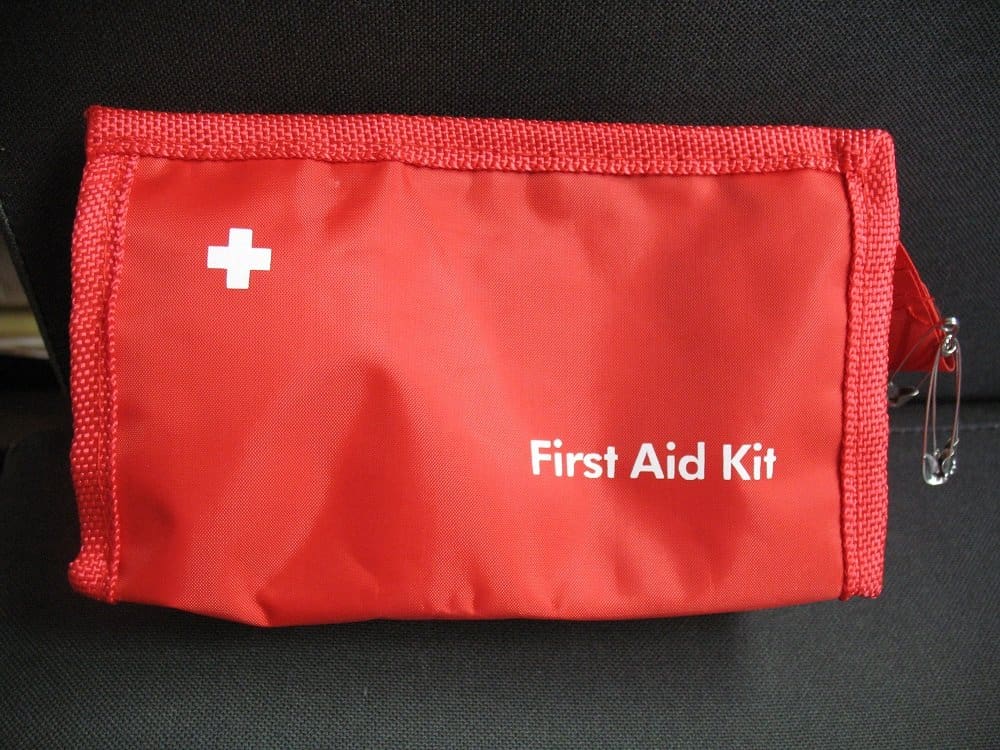
All of these first aid items must be in travel size to achieve your ultralight backpacking goals:
- Medicine for anti-diarrhea
- Antihistamines
- Pain reliever
- Moleskin
- Sport lotion
- Hand sanitizer
- Sunglasses
- Lip balm
- Sunscreen
- Safety pins
- Latex gloves
- Duct tape or any kind of tape
- Gauze pads
- Triple antibiotic ointment
- Small band-aids – Just consider the butterfly band aids for bigger cuts.
- Bug repellents – A bug repellant bracelet is a natural and lightweight option to keep all the mosquitoes at bay.
- Personal medicine – If possible, put them in your pill boxes.
- Small tweezers – These are ideal to get rid of the ticks.
- Pen and Notepad – These are helpful, particularly if you want to leave some notes along the trail.
Ultralight Backpacking Tips
The thrill in going for ultralight backpacking stems from the very fact that it is challenging. The experience in transitioning from fifty-pound pack to a twenty-pound pack for the first time while liberating may also be extremely intimidating. You will be carrying less sunscreen, less shelter, and less clothing. Basically, you will carry less of everything that is not important for safety and leaving several items behind entirely.
It is crucial to approach ultralight backpacking with a sense of diligence and determination. The main goal is to find the balance between speed and safety and to move as fast through the wilderness as possible while thinking of the fact that you’ve get rid of yourself even further from the civilization than average trekkers.
Pack Multipurpose Gear
The beauty of several gear species is that this could kill 2 birds with a stone through serving different purposes. You should take advantage of it through selecting pieces of gear, which serve 2 or more beneficial purposes over such that serve only one or there’s no purpose at all. Multi-tools, utility knives, and Swiss Army Knives are the most obvious example of the kind of multipurpose gear. Yet, there are numerous less intuitive uses for the common pieces of gear. Use sleeping bags as makeshift stretcher, pillow covers, stuff sacks or duct tape to make a good pair of emergency sunglasses.
Be Picky
An ultralight pack is like a baseball or football team with a particular number of spots in the roster. Just as coaches have to be ruthless when selecting which players to cut, you will have to be as ruthless when selecting the items to pack as well as which items you should leave behind. It can be hard at first. Seasoned backpackers would have to part with few comforts of this minimalist sport. However, if you are searching for ways to keep the weight down and cover some ground, leave your favorite books behind.
Practice the Portion Control
It applies to everything from selecting the right sized pack or packing the right amount of the clothes to bring, to not packing too much food, bug spray or sunscreen. In terms of ultralight backpacking, there could be too much of good things.
Share and Share Alike
Several items including tents and cookware could serve the same purpose for different individuals. Just as it does not make sense to carry items that don’t have real purpose, it does not make sense to bring 2 stoves on 2-person backpacking trip. If you plan to share weight with your partners on backpacking, it is crucial to spread that weight as even as possible. It is a considerate thing to do.
Watch Out for Your Water Weight
More than anything else, water is an important thing to consider every time you plan to head out into the wilderness. Yet, water can be heavy. See to it that you carry only as much as you require. Chances are if you are willinmog to put in the work and planning needed for successful ultralight trip, you will be willing to do a bit more if that means keeping your pack lighter.
This planning includes familiarizing yourself with areas where you’ll be backpacking and planning the trip around whatever the water sources available. Just pack enough water for you to make it to the next hole for water and once there, see to it that you rehydrate before you move on.
Can We Go Ultralight For Trekking?
Ultralight gives trekkers peace of mind as it means packing light once you hit the road. Ultralight backpacking allows you to enjoy trails without any worries or burdens. If you do not carry lots of gears, this only means that you’re smart and could take your decisions with situations that happen when trekking with you. How to stay comfortable, safe, and healthy in the trek is all you need to learn as you let ultralight backpacking enter your world.
Entering in the world of ultralight backpacking would test your resourcefulness as well as challenge ideas about have to survive. Getting rid of the daily life’s luxuries grants freedom, which is a self-reliant pride that could spring from forgoing the comforts of home. That is the reason why going ultralight has a lot of benefits. With a bit of experience, DIY experimentation, and research, you may consider going from lightweight to ultralight easily.



